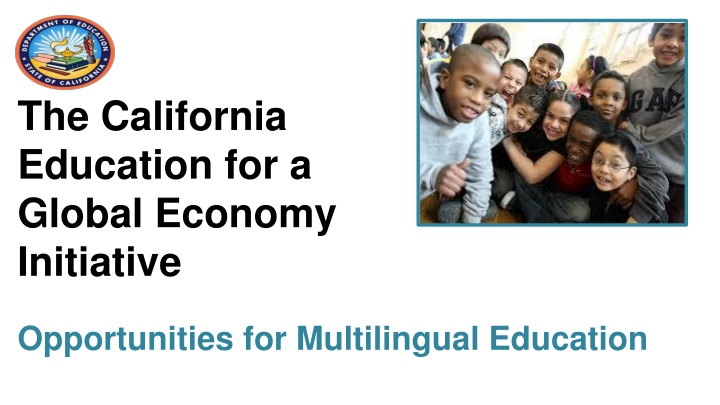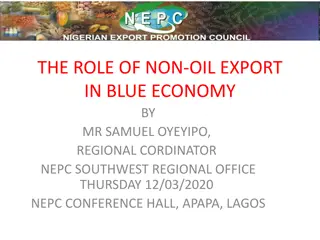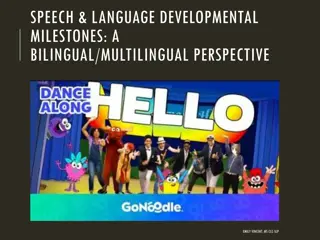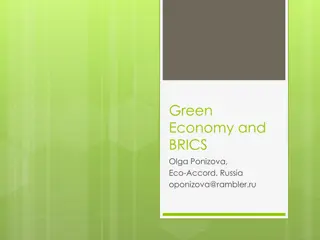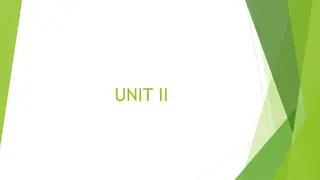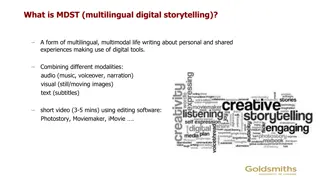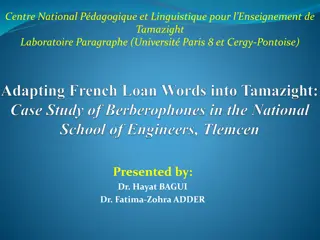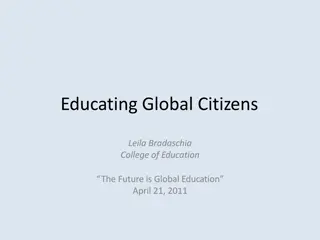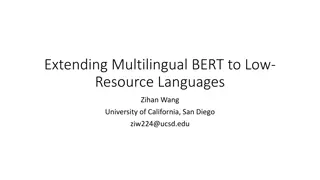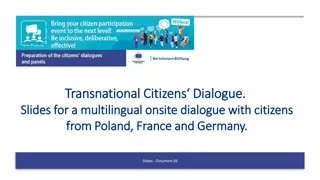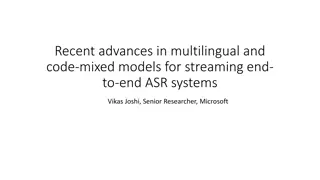Opportunities in Multilingual Education for a Global Economy
Discover the advantages of multilingualism and various multilingual programs, empowering you to make informed decisions for your child's education. Explore the benefits of a bilingual mind, expanded job opportunities, and a broader perspective. Learn about dual-language immersion programs and how they promote language proficiency and cross-cultural understanding.
Download Presentation

Please find below an Image/Link to download the presentation.
The content on the website is provided AS IS for your information and personal use only. It may not be sold, licensed, or shared on other websites without obtaining consent from the author.If you encounter any issues during the download, it is possible that the publisher has removed the file from their server.
You are allowed to download the files provided on this website for personal or commercial use, subject to the condition that they are used lawfully. All files are the property of their respective owners.
The content on the website is provided AS IS for your information and personal use only. It may not be sold, licensed, or shared on other websites without obtaining consent from the author.
E N D
Presentation Transcript
The California Education for a Global Economy Initiative Opportunities for Multilingual Education
Objectives of the Session Participants will: Learn about the advantages of multilingualism Become familiar with some of the types of multilingual programs Be able to ask questions and talk with school staff about multilingual programs to decide what types of programs you want for your children 2
Multilingual Programs https://youtu.be/r2OJqo9h4qY YouTube Video: https://youtu.be/r2OJqo9h4qY 3
The Advantages of Multilingualism (1) The Bilingual/Multilingual Mind: Is more flexible Can multitask more effectively Is able to concentrate on important tasks and block out distractions Is more resistant to dementia or Alzheimer's disease Has improved capacity to resolve problems and overcome obstacles Has stronger interpersonal skills and self-regulation 4
The Advantages of Multilingualism (2) People Who Are Bilingual/Multilingual: Have expanded job opportunities with higher pay Can be citizens of the world with a more comprehensive and tolerant perspective Maintain stronger family and community connections Have a stronger sense of self 5
One language sets you in a corridor for life. Two languages open every door along the way. Frank Smith, Psycholinguist 6
Types of Multilingual Programs 7
Dual-Language Immersion (Two-Way Immersion) Typically Kindergarten through 8th Grade Integrated language learning and academic instruction For native speakers of English and native speakers of another language Goals of language proficiency and academic achievement in students first and second languages, and cross-cultural understanding 8
Developmental Bilingual (Maintenance Bilingual) Kindergarten through 8th Grade Mostly for English learners English and students native language for language arts and content areas Goals of language proficiency and academic achievement in students first and second languages 9
Other Examples of Multilingual Programs Transitional Bilingual One-Way Immersion Heritage or Indigenous Language FLEX/FLES: Foreign Language Elementary Experience or Study Native Speakers Courses 10
Give One, Get One Find your Give One, Get One sheet Write down three questions you have about multilingual programs (One per square) Share your questions with other participants Collect new questions 11
Local Control and Accountability Plan (LCAP) The LCAP is: A three year district-level plan Updated annually The LCAP describes: Vision for students Annual goals Actions to achieve the vision and goals 12
LCAP School districts ask for parent and community input about multilingual programs of interest. How parents can participate: Share information with your District English Learner Advisory Committee (DELAC) representative Attend and share information in the LCAP meetings 13
Parental Notice and Choice Districts are to notify parents about the types of programs offered in the district Parent handbook Other notices Parents may choose a language acquisition program that best suits their child 14
Establishing a New Multilingual Program School districts respond to requests to establish a new multilingual program: When parents or guardians of 30 or more students in a school make a request; or When parents or guardians of 20 or more students at a grade level in a school make a request. The district provides the requested program if possible. 15
How to Request a New Multilingual Program Make your request in writing, with the date, your name, your child s name, and grade level It is not necessary to know the name of the program, but it helps to be familiar with the programs Ask for help in completing the documents if needed Keep copies of any forms for your files 16
District Response The District: Within 10 days of reaching the threshold, provides written notification to parents and school personnel that a new program has been requested Conducts a needs analysis to determine if it is possible to implement the requested program Within 60 days of reaching the threshold, provides notice of the district s determination of whether or not it can implement the requested program 17
Communication Decides to Implement the Program Questions to ask: When do you plan to begin instruction? What materials do you plan to use? How can parents best support the program? Decides Not to Implement the Program Questions to ask: What are your reasons for your determination? Which resources are missing at the school? Is it possible to implement the program the following year? How long before it will be possible? 18
Practice Asking questions about current programs Requesting a new program Asking why a program will not be implemented 19
Parent Participation Become informed about multilingual programs offered in your district: Ask for the district parent handbook Read other notifications from the district to stay informed Visit the CA Ed.G.E. Initiative web page at https://www.cde.ca.gov/sp/ml/caedge.asp At the school level: Attend and share information at your school s English Learner Advisory Committee (ELAC) meetings Request a multilingual program that best meets the needs of your child
State Seal of Biliteracy The purpose of the State Seal of Biliteracy is to: Recognize high school graduates who are biliterate or multiliterate Encourage pupils to study languages Provide employers and colleges with a method to identify people with language and biliteracy skills Strengthen intergroup relationships Affirm the value of diversity and honor the multiple cultures and languages of a community 21
Thank you! 22
